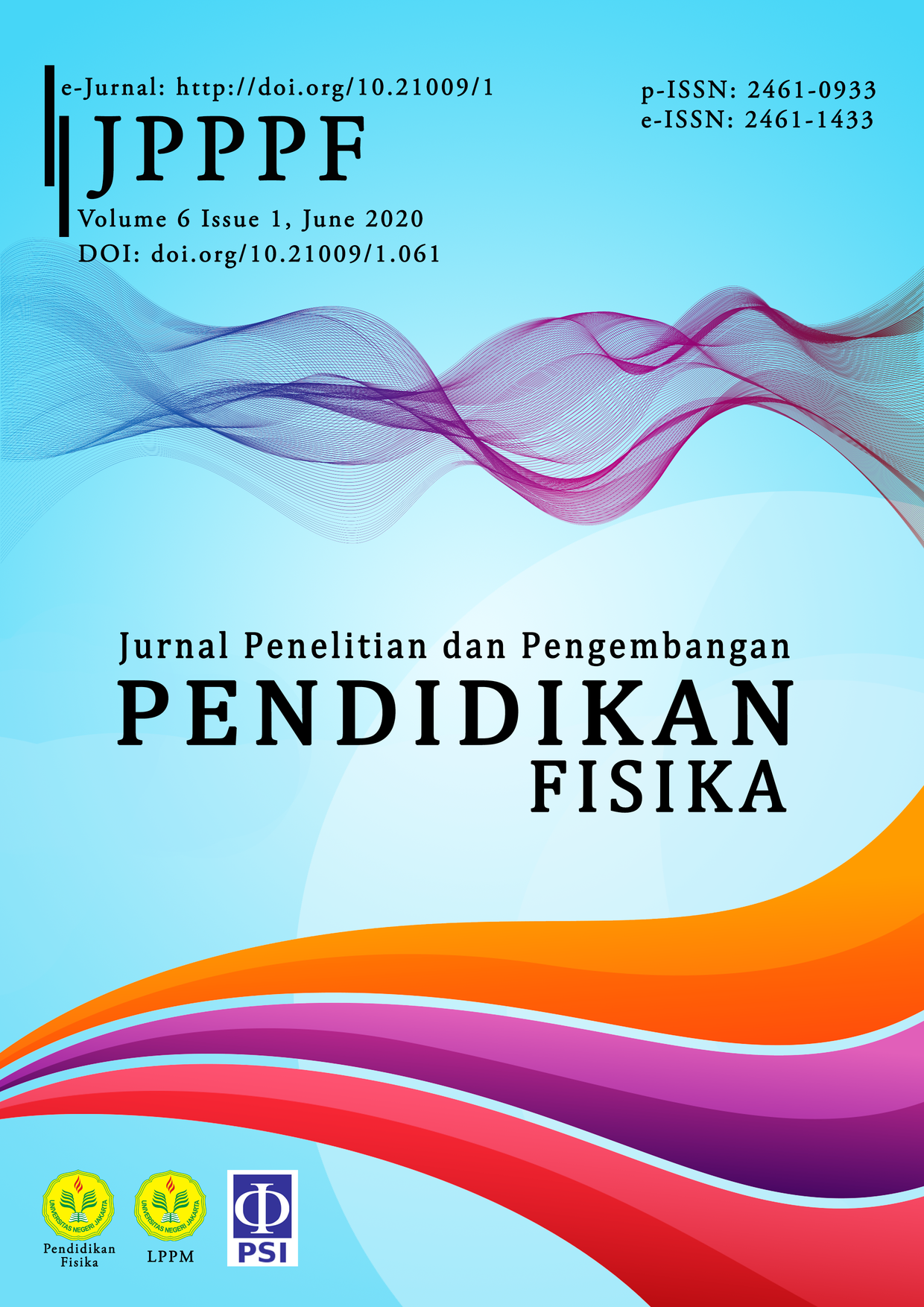Assessment Virtual Test (ASVITE): Assessment Virtual Based on Interactive Lecture Demonstration (ILD) to Support Employability Skills
DOI:
https://doi.org/10.21009/1.06101Keywords:
virtual test assessment, interactive lecture demonstration, employability skillsAbstract
The development of information and communication technology (ICT) based on computer technology offers another alternative to an assessment form. In supporting employability skills, the assessment format can be presented in an assessment combined with animation. This study aims to develop a virtual test assessment (ASVITE) based on Interactive Lecture Demonstration ( IL D) to support 21st-century competence of employability skills. This study uses an R&D method with a modification of the 4D development model, consisting of define, design, develop, and disseminate. Product developed in the form of tests ASVITE the objective test with four possible answers animation associated with the optical material. The results of the judgment by experts in physics material obtained 18 valid questions, and based on ICT experts, an average value of 84,17% was collected with the category "Very Eligible" in supporting employability skills. The instrument trial results obtained an average value of 83.4% with the grade "Very Good" based on student responses. ILD-based ASVITE can support employability skills.
References
Bello-Bravo, J, Tamò, M, Dannon, EA, & Pittendrigh, BR 2017, ‘An assessment of learning gains from educational animated videos versus traditional extension presentations among farmers’, Benin. Information Technology for Development, vol. 24, no. 2, pp. 224-244.
Christine, W 2020, ‘Education for sustainability: fostering a more conscious society and transformation towards sustainability’, International Journal of Sustainability in Higher Education, vol. 21, no. 1, pp. 112-130.
Creswell, JW & Creswell, JD 2018, Research design: Qualitative, quantitative, and mixed methods approaches, Sage publications, California.
El Mansour, B, & Dean, JC 2016, ‘Employability skills as perceived by employers and university faculty in the fields of human resource development (HRD) for entry level graduate jobs’, Journal of Human Resource and Sustainability Studies, vol. 4, no. 1.
Griffiths, DA, Inman, M, Rojas, H, & Williams, K 2018, ‘Transitioning student identity and sense of place: future possibilities for assessment and development of student employability skills’, Studies in Higher Education, vol. 43, no. 5, pp. 891-913.
Kuznetsova, OA, Palferova, SS, & Sherstobitova, AA 2019, ‘Application of multivariate statistical methods for assessment of educational competencies’, Smart Education and e-Learning, vol. 144, pp. 609-618.
Muliyati, D, Marizka, H, Bakri, F 2019, ‘E-learning using wordpress on physics materials with the 5E learning cycle strategy’, Jurnal Penelitian dan Pengembangan Pendidikan Fisika, vol.5, no. 2, pp. 101-112.
Pheko, MM & Molefhe, K 2016, ‘Addressing employability challenges: a framework for improving the employability of graduates in Botswana’, International Journal of Adolescence and Youth, vol. 22, no. 4, pp. 455-469.
Richey RC, Klein JD, Tracey, MW 2010, The instructional design knowledge base: theory, research, and practice, Routledge.
Suleman, F 2017, ‘The employability skills of higher education graduates: insights into conceptual frameworks and methodological options’, Higher Education, vol. 76, no. 2, pp. 263-278.
Taufiq, M, Suhandi, A, & Liliawati, W 2017, ‘Effect of science magic applied in interactive lecture demonstrations on conceptual understanding’, AIP Conference Proceedings, vol. 1868, no. 1.
Van Dinther, M, Dochy, F, & Segers, M 2011, ‘Factors affecting students’ self-efficacy in higher education’, Educational research review, vol. 6, no 2, pp. 95-108.
Wibowo, FC, Suhandi, A, Samsudin, A, Darman, DR, Suherli, Z, Hasani, A, ... & Coştu, B 2017, ‘Virtual microscopic simulation (VMS) to promote students' conceptual change: A case study of heat transfer’, Asia-Pacific Forum on Science Learning & Teaching, vol. 18, no. 2.
Widianingtiyas, L, Siswoyo, & Bakri, F 2015, ‘Pengaruh pendekatan multi representasi dalam pembelajaran fisika terhadap kemampuan kognitif siswa SMA’, Jurnal Penelitian & Pengembangan Pendidikan Fisika, vol. 1, no.1, pp. 31-38.
Wilson, FR, Pan, W, & Schumsky, DA 2012, ‘Recalculation of the critical values for Lawshe’s content validity ratio’, Measurement and evaluation in counseling and development, vol. 45, no. 3, pp. 197-210.
Yulita, AR, Ambarwulan, D, & Bakri, F 2018, ‘Pengembangan E-learning menggunakan chamilo untuk membantu proses pembelajaran fisika SMA kelas X semester II’, Gravity: Scientific Journal of Research and Learning Physics, vol. 4, no 2.











